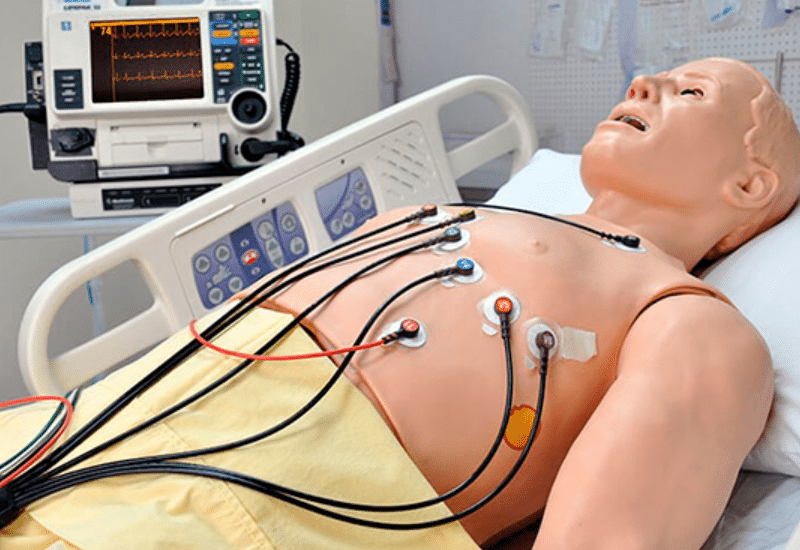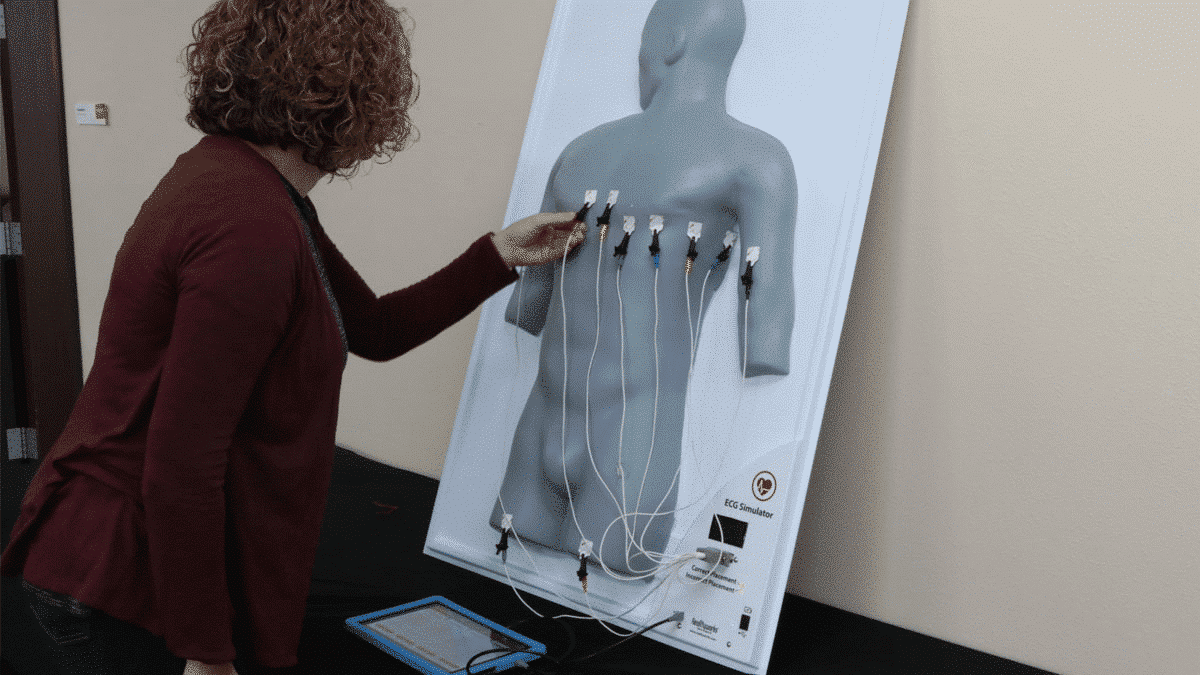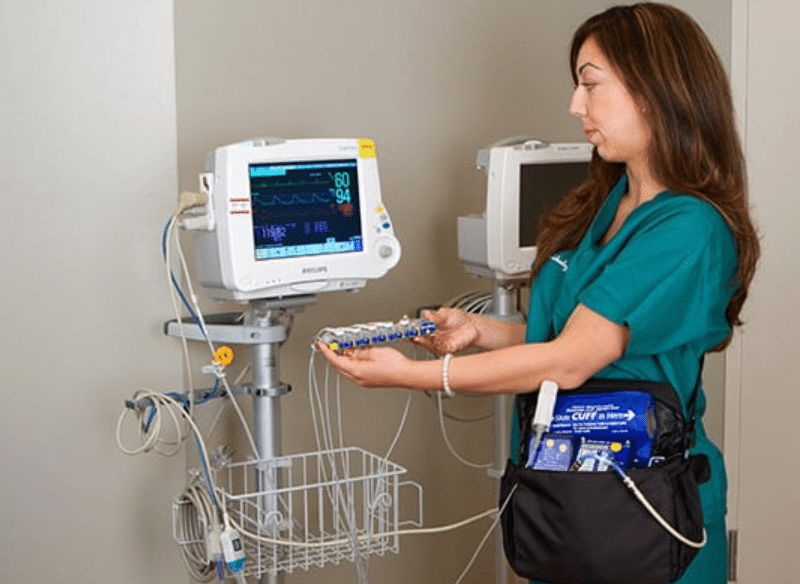Medical education has changed dramatically during the last few decades, and concern over patient safety is one of the main reasons for the adjustments. There have been various cases of medical injury and medical malpractice reported around the world. Medical malpractice claims involve patients who have been injured or harmed as a result of inadequate medical treatment or incorrect diagnoses from medical practitioners such as doctors, nurses, and medical device technicians.
Medical simulation training is one of the most efficient methods of improving clinical competency. The training has been shown to have numerous benefits that help improve medical practitioners’ competence, thereby improving patient safety and lowering healthcare expenditures. One medical field that has significantly benefited from the use of medical simulation training is cardiology.
Simulators: A Revolutionary Tool for Cardiology Training
In cardiology, ECG simulators have been extremely useful in helping medical practitioners improve their abilities to diagnose and treat cardiac disorders. ECG simulators provide healthcare practitioners with realistic training scenarios that allow them to practise their abilities and learn how to respond to various medical circumstances by reproducing the heart rhythms and vital signs of actual patients. These simulators are very useful for students and new medical professionals learning about heart health and treatment protocols.
An electrocardiogram (ECG) test is typically conducted in hospitals and medical facilities to assess the electrical activity of the heart and look for abnormalities. By examining the shape and health of the heart, this test can help identify and treat heart disease. But before conducting real tests, medical professionals and students should practise using an ECG simulator device.
For this reason, different ECG simulator models are available on the market. They can be compact, portable, or come in the form of a full-size manikin. Generally, these simulators come with a software programme or employ a website.
Benefits of Training with An ECG Simulator
Patient Safety
ECG simulation training reproduces real-world clinical situations. As a result, it allows students to get familiar with the clinical setting while having the freedom to make mistakes, learn from them, and try again.
Furthermore, ECG training is done under the supervision of a healthcare expert and may even be recorded. This enables extensive evaluation and feedback to be offered to medical students.
Customisable Learning Scenarios
This kind of training offers students a variety of learning scenarios by utilising mannequins and standardised patient training. The cases that patients bring to the clinic on any given day will determine how well they are prepared for training in real-world clinical settings. Instructors might establish various clinical and/or medical circumstances for the participant during simulation training.
Some centres that provide ECG simulation may even work with students to find out which cases or situations they want to learn about. Because simulation training is error-prone, these scenarios can be replicated and rescheduled at will, increasing the chances of recreating even the most unusual clinical situations.
Confidence
Familiarity with the clinical environment and the development of clinical muscle memory result in patient safety. As a student, this results in self-assurance. With a forgiving environment and the capacity to repeat any ECG learning setting at any time, repetition helps students develop clinical decision-making skills. Students will be more autonomous during their residency years if they are confident. Simply put, confidence makes patients feel safer and rely on the clinic.
The assurance obtained from ECG simulation training extends beyond being able to diagnose a condition. It can also refer to building confidence in patient encounters or dealing with high-stress situations.
Suggested ECG Simulators
Simulaids® ALS Full Body Trainer
This simulator enables the maintenance of airways using Endotracheal (ET) tubes, Nasopharyngeal Airways (NPA), Oropharyngeal Airways (OPA), Combitubes, and other adjuncts, as well as the recognition of ECG patterns using the Interactive ECG rhythm generator, IV catheterizations in the lower arm, and CPR. Also, it is excellent for practising defibrillation at full joule levels while using patient care equipment.
Anatomical landmarks include the sternum, rib cage, and substernal notch. The trainer consists of the uvula, vocal chords, glottis, epiglottis, larynx, arytenoids cartilage, trachea, oesophagus, inflated lungs, and stomach.
The pelvis and legs are included with this full-body trainer to enable patient movement practice. To get feedback, you can use the Heartisense CPR Feedback Premium Kit. This kit is inserted beneath the manikin’s chest skin and wirelessly connects to a tablet via a free app.
Life/form® 15-Lead ECG Placement Trainer
The Life/form® 15-Lead ECG Placement Trainer allows students to anatomically learn up to 15-lead ECG electrode placement while offering visual feedback on electrode placement accuracy.
The electrodes will be placed on the adult trainer, utilising anatomical landmarks such as the midclavicular line, intercostal spaces, midaxillary line, anterior axillary line, and scapula.
Connection points are provided for four limb leads and V1 through V9, with the option of attaching right- or left-sided electrodes. The simulator does not give ECG output signals, but you can simulate rhythms and perform hands-free defibrillation by connecting any ECG arrhythmia simulator straight to an ECG monitor.
With this simulator, an adult torso, a 15-lead electronics box, 50 electrodes, a power adapter, 13 lead sets, two “C” batteries, a sturdy transport bag, and an instruction booklet are included.
Warranty period of five years.
Simulaids® Interactive ECG Simulator
The Simulaids® Interactive ECG Simulator is the most complete four-lead simulator you’ll find available on the market. This versatile simulator can be used to teach vital heart procedures, such as:
- Learn about 17 different arrhythmias at both adult and paediatric rates.
- You can discharge directly into the simulator for times when you don’t want to bring out the manikin to demonstrate the patterns and conversion methods
- It can monitor both three and four leads.
- Rhythm and defibrillation can be obtained directly using paddles and optional manual adaptors.
- Detects six arrhythmias.
- Converts from potentially lethal rhythms to one of the instructor’s choices.
- Pacing can be done with any defibrillator from any manufacturer.
- When not in use, the simulator’s battery-saving feature turns it off automatically.
SL-8 SimSlim® Multi-Parameter ECG Patient Simulator
The most compact and feature-rich multi-parameter patient simulator you can find is the SL-8 SimSlim® Multi-Parameter ECG Patient Simulator. It includes 4-IBP, YSI 400/700 Temperature, Arrhythmia, ECG, and Respiration. Up to 10 years of battery life without charging or replacing batteries are possible thanks to its cutting-edge power design! The setup and testing times are reduced when only one button is used.
Related



